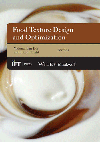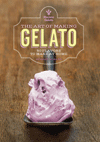Tharp & Young: Non-standardized Frozen Desserts
A growing number of frozen dessert products achieve reduced ingredient costs by departing from the requirements of the frozen desserts Standards of Identity (S of I) in the Code of Federal Regulations.

A growing number of frozen dessert products achieve reduced ingredient costs by departing from the requirements of the frozen desserts Standards of Identity (S of I) in the Code of Federal Regulations. These standards define ice cream and other frozen desserts with great specificity regarding the amount and type of dairy ingredients, weight per gallon and flavor labeling. However, opportunities exist outside these limits.
It is possible to make products that function in similar fashion to or, in some cases, better than, classical standardized ice cream. Lower cost and often improved performance can be accomplished in a variety of ways. Relatively simple alternatives can be contemplated involving levels of dairy solids (milk fat and milk solids, not fat) outside the S of I provisions. Once specific product features are identified, multiple variables may need to be balanced at the same time to achieve acceptable results.
The table shows specific examples of non-standard compositions. These are not intended to be definitive nor limiting. The reference composition meets the minimum S of I requirements - 10% fat, 20% total milk solids, with sweet whey solids (WS) at the maximum level permitted. Composition A represents cost saving achieved by replacing 2.5% of the MSNF with 10 DE maltodextrin (MDX), which takes the total milk solids below the standards minimum and increases the whey solids level above the regulatory ceiling. Composition B represents additional cost saving involving reducing the fat level by 2.0%, adding additional WS, increasing the proportion of corn syrup solids (CSS) in the sweetener system and maintaining total solids by increasing the level of MDX. Target theoretical sweetness (14-15%) is maintained by including a blend of high-intensity sweeteners (other similar sweetener combinations can be used). Such blends can carry a substantially lower cost per unit of sweetness, providing additional cost savings, and, when properly balanced, a more sugar-like sweetness. (See our column on controlling sweetener costs in the February issue).
The table includes calculated freezing profile data showing that the cost advantages represented by compositions A and B are supplemented by technical advantages related to changes in freezing point. The non-standard alternatives each have a higher freezing point than the reference, which increases the amount of water frozen at 22°F, a typical freezer exit temperature. It also reduces the amount of water involved in any heat shock episode. That is shown by the Texture Stability Index data, which represent the amount of water melting and refreezing during the temperature variation. Both effects represent a positive influence on texture quality of the product when it reaches the consumer. Further, the use of MDX for bulking would have an additional positive effect on reducing ice crystal growth and adding to mouth feel via a contribution to water immobilization.
Qualitatively, technically advanced stabilizer/emulsifier blends are additional tools to manage shelf life and eating quality. Some of these products also add to cost savings by supporting overrun levels above those allowed by the S of I while maintaining acceptable eating properties. Equipment innovations also can contribute to that objective.
The same principles can be applied to develop further departures from S of I provisions, including but not limited to, the application of modified milk fats (fractionated and/or trans-esterified), vegetable fats, concentrated, modified and fractionated milk proteins, non-dairy solids, alternative proportions of fat to milk-solids-not-fat, ultra-low caloric targets (combination of ultra-low solids, fat, sugars, overrun) and other unconventional sweetener options, such as combinations of high-intensity sweeteners, traditional sweetener systems and novel bulking agents that enhance performance and eating quality while reducing cost.
As new finished product features are contemplated, they too may drive interest in non-standardized frozen desserts, not simply due to cost savings but to necessity.
By considering all available ingredients and processing tools, novel (and cost-effective) frozen desserts can be created. To do so also requires skillful, and simultaneous, management of multiple factors affecting physical performance and sensory attributes.
For deeper coverage of non-standard products and other hot topics, join Bruce Tharp and Steve Young at Tharp & Young On Ice Cream Technical Short Course, Workshops and Clinics, Dec. 1-3, Las Vegas, or June 13-17, 2011 in Singapore. Go to www.onicecream.com or call 610/975-4424 or 281/596-9603 for additional information.

A growing number of frozen dessert products achieve reduced ingredient costs by departing from the requirements of the frozen desserts Standards of Identity (S of I) in the Code of Federal Regulations. These standards define ice cream and other frozen desserts with great specificity regarding the amount and type of dairy ingredients, weight per gallon and flavor labeling. However, opportunities exist outside these limits.
It is possible to make products that function in similar fashion to or, in some cases, better than, classical standardized ice cream. Lower cost and often improved performance can be accomplished in a variety of ways. Relatively simple alternatives can be contemplated involving levels of dairy solids (milk fat and milk solids, not fat) outside the S of I provisions. Once specific product features are identified, multiple variables may need to be balanced at the same time to achieve acceptable results.
The table shows specific examples of non-standard compositions. These are not intended to be definitive nor limiting. The reference composition meets the minimum S of I requirements - 10% fat, 20% total milk solids, with sweet whey solids (WS) at the maximum level permitted. Composition A represents cost saving achieved by replacing 2.5% of the MSNF with 10 DE maltodextrin (MDX), which takes the total milk solids below the standards minimum and increases the whey solids level above the regulatory ceiling. Composition B represents additional cost saving involving reducing the fat level by 2.0%, adding additional WS, increasing the proportion of corn syrup solids (CSS) in the sweetener system and maintaining total solids by increasing the level of MDX. Target theoretical sweetness (14-15%) is maintained by including a blend of high-intensity sweeteners (other similar sweetener combinations can be used). Such blends can carry a substantially lower cost per unit of sweetness, providing additional cost savings, and, when properly balanced, a more sugar-like sweetness. (See our column on controlling sweetener costs in the February issue).
The table includes calculated freezing profile data showing that the cost advantages represented by compositions A and B are supplemented by technical advantages related to changes in freezing point. The non-standard alternatives each have a higher freezing point than the reference, which increases the amount of water frozen at 22°F, a typical freezer exit temperature. It also reduces the amount of water involved in any heat shock episode. That is shown by the Texture Stability Index data, which represent the amount of water melting and refreezing during the temperature variation. Both effects represent a positive influence on texture quality of the product when it reaches the consumer. Further, the use of MDX for bulking would have an additional positive effect on reducing ice crystal growth and adding to mouth feel via a contribution to water immobilization.
Qualitatively, technically advanced stabilizer/emulsifier blends are additional tools to manage shelf life and eating quality. Some of these products also add to cost savings by supporting overrun levels above those allowed by the S of I while maintaining acceptable eating properties. Equipment innovations also can contribute to that objective.
The same principles can be applied to develop further departures from S of I provisions, including but not limited to, the application of modified milk fats (fractionated and/or trans-esterified), vegetable fats, concentrated, modified and fractionated milk proteins, non-dairy solids, alternative proportions of fat to milk-solids-not-fat, ultra-low caloric targets (combination of ultra-low solids, fat, sugars, overrun) and other unconventional sweetener options, such as combinations of high-intensity sweeteners, traditional sweetener systems and novel bulking agents that enhance performance and eating quality while reducing cost.
As new finished product features are contemplated, they too may drive interest in non-standardized frozen desserts, not simply due to cost savings but to necessity.
By considering all available ingredients and processing tools, novel (and cost-effective) frozen desserts can be created. To do so also requires skillful, and simultaneous, management of multiple factors affecting physical performance and sensory attributes.
For deeper coverage of non-standard products and other hot topics, join Bruce Tharp and Steve Young at Tharp & Young On Ice Cream Technical Short Course, Workshops and Clinics, Dec. 1-3, Las Vegas, or June 13-17, 2011 in Singapore. Go to www.onicecream.com or call 610/975-4424 or 281/596-9603 for additional information.
Looking for a reprint of this article?
From high-res PDFs to custom plaques, order your copy today!







